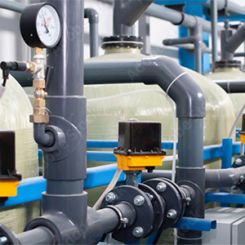One pump manufacturer provided a major paper mill with what could become a new industry standard.
07/15/2015
Convincing a major player in the pulp and paper industry to break ranks and install a different kind of medium consistency (MC) stock pump was not easy, but after nearly a decade of trying, one progressive cavity pump manufacturer accomplished what they believe has the potential to become a new industry standard.
 Image 1. The new solution was a progressive cavity pump with a nominal pumping capacity of 1,120 gallons per minute (GMP) or 9,340 pounds per minute. (Courtesy of SEEPEX)
Image 1. The new solution was a progressive cavity pump with a nominal pumping capacity of 1,120 gallons per minute (GMP) or 9,340 pounds per minute. (Courtesy of SEEPEX)- Unique geometry of the rotors and the rotor coatings
- Durable proprietary coating of the rotors and stators that withstands abrasion
- Ideal fit between the rotor and stator, which is critical to the pump's performance and longevity
- Option for the appropriate use of exotic materials such as duplex stainless, titanium, Hastelloy and Alloy 20, as opposed to typical metals
- The use of more than 25 standard elastomers that are needed for specific applications
- The ideal compression between the rotor and stator to ensure maximum performance

